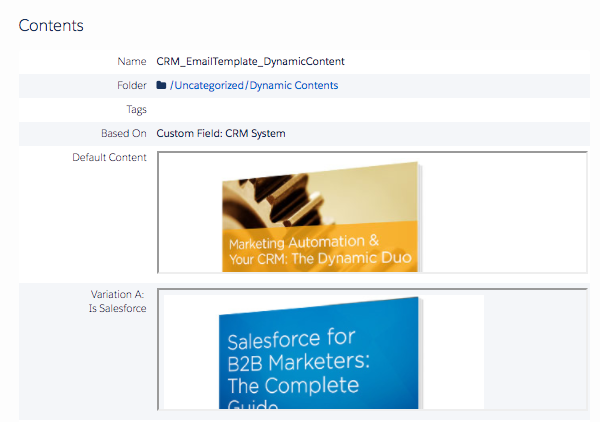Prepare to Send Emails
Learning Objectives
After completing this unit, you’ll be able to:
- Build your audience.
- Personalize your emails.
Introduction
As you work with Pardot, you start to convert leads to prospects and learn more about those prospects—this is great! The more you know about someone, the more targeted and personal you can make your email communications to them.
When it comes to email correspondence, the first step is establishing your audience. This can seem obvious, but choosing your target recipient is crucial to effective email outreach. After that, it becomes much easier to personalize and customize, which are two of the most important factors in an effective email marketing campaign or interaction.
Building Your Audience
When deciding on your target audience, consider basic questions like, “Which department is this relevant to?” and “Who is the decision-maker that I need to reach with this email?” Then zoom in to focus on the details. If you’re running a campaign geared toward advertising departments in the entertainment industry, for example, you can ask questions like, “What kinds of advertising does this agency already do?” and “What problem or inefficiency can my product help with?”
Once you know the answers, you’re ready to assemble your audience, the foundation on which you build your email strategy and sends.
When you know the audience for your email, you can use different criteria and field values in Pardot’s automation tools to segment your prospects in a variety of ways. The Account Engagement for Targeted Audiences module shows you how to use these tools.
- Automation rules
- Segmentation rules
- Completion actions
- Dynamic lists
Take full advantage of Pardot’s lead-generation tools to build your lists. It takes time to build a substantial list, so help yourself out by collecting email-ready data at every opportunity. Include a sign-up form on blog and content pages, include a link to a sign-up form in your social media posts, and build in “forward to a friend” functionality in email campaigns themselves.
Personalize Your Emails
Customization and personalization at the customer level is more important than ever. Sixty-eight percent of marketing leaders say their company is increasingly competing on the basis of customer experience, and 65% of business buyers are likely to switch brands if a vendor doesn’t personalize communications to their company ( 2017 State of Marketing report).
Here’s what those numbers tell us: Your customers expect relevant, varied, and tailored content in their inbox. It’s your job as a marketer to deliver that. Luckily, Pardot’s got your back. Variable tags and dynamic content are the two ways you can adjust your emails based on recipients.
Personalization is key here. The more targeted your lists are, the more you can personalize your content, and the more effective it is. For example, you can create detailed segmentations around past purchases or a specific activity on your website.
Variable Tags
With variable tags, you use content from your prospect records to personalize your emails. You can also use variable tags to insert standard information into your email templates, such as your company name and address. We reviewed adding default mail merge values to your fields in the Plan and Prepare unit of the Pardot Lead Nurturing module. Default values prevent mishaps if you don’t have a value present in that field for a prospect.
Let’s look at some example variable tags.
| Variable Tag | Field Information |
|---|---|
| %%first_name%% |
Prospect’s First Name field |
| %%industry%% |
Prospect’s Industry field |
| %%job_title%% |
Prospect’s Job Title field |
| %%last_name%% |
Prospect’s Last Name field |
As you can see, each variable tag is tied to a corresponding prospect field. Let’s look now at an individual prospect record in Pardot to see how you can use variable tags to insert specific information into an email.

| Variable Tag | Field Information | Prospect's Field Value |
|---|---|---|
| %%first_name%% |
Prospect’s First Name field |
Jessie |
| %%last_name%% |
Prospect’s Last Name field |
Toy |
| %%company_name%% |
Prospect’s Company field |
Roob, Fisher and Zboncak |
| %%job_title%% |
Prospect’s Job Title field |
VP of Engineering |
As you can see, Pardot uses the prospect’s email address to look at their prospect record. Then, variable tags are populated based on the field values found on the prospect record. This lets you create one email template and personalize it for every single email recipient.
Dynamic Content Speaks to the Individual
More than likely you already have a ton of information about your customers in your database. Maybe you store information about each customer’s interests, such as golfing, hiking, or running. Maybe you record which products your customers use, or what industries they belong to. Use this information to your advantage with dynamic content—content that displays according to rules that you define based on values within a subscriber’s record. Dynamic content ensures subscribers receive messages targeted to their interests.
Pardot checks a prospect’s record for a specified field value, and then adjusts what the prospect sees. In the example below, the dynamic content variation is based on the custom field CRM System.

Now that you’ve learned how to build your audience and started customizing your Pardot account to personalize your emails, we’ll move on to the next unit and tackle creating email templates as part of your email marketing strategy.